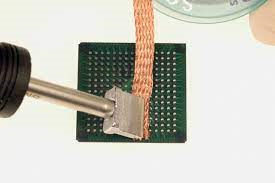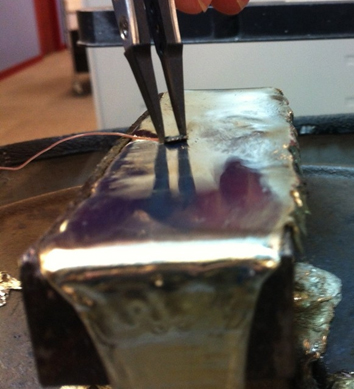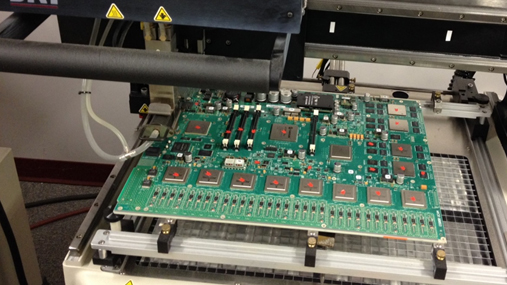



Call us Now! 1-847-797-9250
BEST soldering geeks enable electronics companies to be more effective through professional instruction, tools and taking secondary assembly projects off your plate




BEST soldering geeks enable electronics companies to be more effective through professional instruction, tools and taking secondary assembly projects off your plate
There are a variety of both contact and contactless deballing methods used in the reballing process.

The contact deballing process typically involves the use of hand soldering tools-namely solder braid or wick, flux and a soldering iron with blade tip to remove the remnant solder from the component. The advantages to this technique include not sending the component die into a thermal excursion and hence not negatively impacting the reliability of the reballed device. In addition, it is a much faster process than the other methods. These advantages are counterbalanced by having to utilize a highly skilled soldering technician to perform this operation. Solder mask can be damaged and pads can be ripped off the component causing damage if the proper technique is not followed. These are the downside risks of contact deballing.
In contactless deballing, the component is either immersed in a dynamic solder fountain wave or the component has the solder balls removed through heat and vacuum from a programmable solder excavation system. Automated robotic hot solder dip machines allow multiple BGA devices equipped with a multiple-position arm to be repeatably and carefully dipped into a dynamic wave.

There are several downsides to this deballing method. While there is a high degree of process control including the immersion time, the preheat time for flux activation and the amount of time the die is exposed to a heat excursion, there are numerous downside risks to contactless deballing. One of the risks is that as the die is in close proximity to molten solder which results in the die being exposed to a heat excursion cycle . Another process challenge is that after being exposed to a dynamic solder fountain the remnant solder on the deballed device is no longer flat but instead has a rounded remnant fillet shape. This lack of flatness makes the placing of solder balls more challenging (round solder sphere on a rounded pad) and makes the potential for solder shorts during reflow higher. In addition, the remnant solder, typically a little more than .001” (0.025mm), may impact the reliability of the solder ball interconnection due to the remnant alloy. While the most common lead free alloy SAC305 overwhelming consists of tin, routine analysis of the pot should be carried out to ensure the contamination level for silver remains below the J-STD-001 maximum of 0.10% while keeping copper below 0.02%. If the alloy in the stripping pot becomes contaminated with lead-free solder, the remaining solder could also become contaminated.
Another method by which deballing can be performed is by using a hot air excavation system. This system is essentially a programmable hot air rework tool which through heat and ne to make sure negative pressure “vacuums up” the remnant solder.
